Edinburgh, Lothian Road, Caledonian Hotel
Hotel (19th Century)
Site Name Edinburgh, Lothian Road, Caledonian Hotel
Classification Hotel (19th Century)
Alternative Name(s) Princes Street Station; Caledonian Railway; Lothian Road; Rutland Street
Canmore ID 68119
Site Number NT27SW 110
NGR NT 24712 73597
NGR Description NT 24691 73633 to NT 24736 73508
Datum OSGB36 - NGR
Permalink http://canmore.org.uk/site/68119









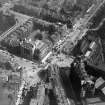









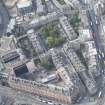





















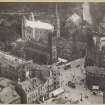


















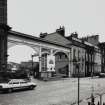
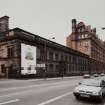







































First 100 images shown. See the Collections panel (below) for a link to all digital images.
- Council Edinburgh, City Of
- Parish Edinburgh (Edinburgh, City Of)
- Former Region Lothian
- Former District City Of Edinburgh
- Former County Midlothian
NT27SW 110 24712 73597
For integral Railway Station (now destroyed) see NT27SW 189.00
For Former Station entrance screen now used as entrance to hotel car park see:
NT27SW 189.02 NT 24655 73582 Entrance Screen
For Princes Street Station and station buildings on Lothian Road also see NT27SW 189
ARCHITECT: Kinnear & Peddie 1892-94
J M Dick Peddie 1894-1896
Peddie & Washington Browne 1896-1906
(Peddie & Kinnear 1868, designs for station and hotel not carried out)
Interior refurbishment by M I A Design, 1990.
Photographic Record (June 1953)
Informal photographs of Edinburgh decorated for the Coronation of Queen Elizabeth II in 1953 taken by the Scottish National Buildings Record.
Project (1997)
The Public Monuments and Sculpture Association (http://www.pmsa.org.uk/) set up a National Recording Project in 1997 with the aim of making a survey of public monuments and sculpture in Britain ranging from medieval monuments to the most contemporary works. Information from the Edinburgh project was added to the RCAHMS database in October 2010 and again in 2012.
The PMSA (Public Monuments and Sculpture Association) Edinburgh Sculpture Project has been supported by Eastern Photocolour, Edinburgh College of Art, the Edinburgh World Heritage Trust, Historic Scotland, the Hope Scott Trust, The Old Edinburgh Club, the Pilgrim Trust, the RCAHMS, and the Scottish Archive Network.
Field Visit (11 March 2009)
Four seated allegorical female figures are spaced out across the façade above the ground floor cornice, each above double pillars. All are three-dimensional with their backs against the wall. From left to right (east to west) they represent:
(1) Engineering. On the figure's right is a large anvil and hammer, on her left is a 'pile of rich linings' (1). Across her knees she holds a large sheet of paper against which she holds a rule in her left hand.
(2) Agriculture. She holds a scythe in her right hand and has a wheatsheaf on either side of her. In her hair are wheat stalks.
(3) Commerce. The figure has a large cotton bale tied with rope on either side of her. On her knee she holds a piece of paper with her left hand. In her right hand she holds a pen by her right side.
(4) The Arts. She held a brush in her right hand (now missing) and has a palette and brushes in her left). By her left side is a column, at the foot of which are three rolled canvases. Her right breast is bare.
The pediment over the door contains an elaborate scrolled shield carved with the coat of arms of the Caledonian Railway Company: a lion rampant. Flanking the shield are a seated male figure to left, and a seated female figure to right; their feet point towards the corners but their heads turn back to the centre. The male figure has his right hand on a model of an engine. By his left hand is a bag spilling coins. The female figure has her right hand on an open book, and her left hand on a winged wheel. Beyond the wheel is a lamp.
Either side of the central third floor window is a convex oval cartouche surrounded by scrolls and suspended garlands of fruit. The cartouche on the left is carved with the arms of Edinburgh: a three-towered castle, the cartouche on the right is carved with the arms of the Caledonian Railway Company: a lion rampant.
The Caledonian Hotel was built as part of the Caledonian Railway Station. The three arches were designed as the entrance to the station by Kinnear & Peddie in 1890-1893. The four allegorical figures date from 1894. The arches were incorporated into the hotel by J. M. Dick Peddie & G. Washington Browne in 1903.
Inscriptions : None Visible
Signatures : On east side of pedestal of Engineering (incised letters): J. HUTCHISON. / R.S.A. / 1894.
On west side of pedestal of The Arts (incised letters): J. HUTCHISON. / R.S.A. / 1894.
Design period : 1890-1903
Information from Public Monuments and Sculpture Association (PMSA Work Ref : EDIN0025)
Online Gallery
The National Collection at RCAHMS includes a wealth of material illustrating and recording railways and related buildings across Scotland, both past and present. This gallery showcases images from a number of our modern and historic collections including well known sites like the Glenfinnan viaduct and the Forth Railway Bridge, and sites that no longer survive such as St Enoch Station and St Rollox Locomotive Works, Glasgow. One of the main collections for railway history are the photographs taken by Professor John Hume in the 1960s and 1970s of Scottish industrial sites, including stations, bridges, engineering works and heavy industry associated with the railways, with many of these buildings and sites now closed or demolished. The collection at RCAHMS comprises more than 25,000 images.
The National Collection of Aerial Photography and the Aerofilms collection reveal how the railway network evolved from the 1940s, before being rationalised in the 1960s with many routes completely altered. One such example is Galashiels before the original Waverley line closed. Other noteworthy collections include the historic postcards of stations collected by the Reverend H D E Rokeby; glass plate negative collections by photographers like H Bedford Lemere showing the new stations at Greenock and Gourock; and Alexander Inglis with the construction of Waverley Station in Edinburgh. In addition, we also hold a large collection of fascinating photographs documenting the building of the Forth Railway Bridge in the 1880s. Nineteenth century drawings featured include the Dick Peddie and McKay designs for the Caledonian Station and Hotel, Waverley Station and the now disused Scotland Street tunnel, all in Edinburgh. One of the earliest records is a map showing proposals for a railway from Kilmarnock to Troon in 1807.
In addition to the collected material, one of the largest components are the records created by RCAHMS specialist survey staff over the last hundred years. Aerial photographs place railway lines and stations in their landscape while measured drawings of bridges and viaducts reveal the carefully engineered detail of these structures. More recently, survey photographs of disused or demolished railway buildings on closed lines now form a valuable and continually expanding record of Scotland’s railway history. All the collections can be consulted in our Search Room or by using our online resources. We also maintain an active digitisation programme, with new images being added to Canmore every day. This gallery highlights images from across the Collection and contains examples which are being made available online for the first time.









































































































